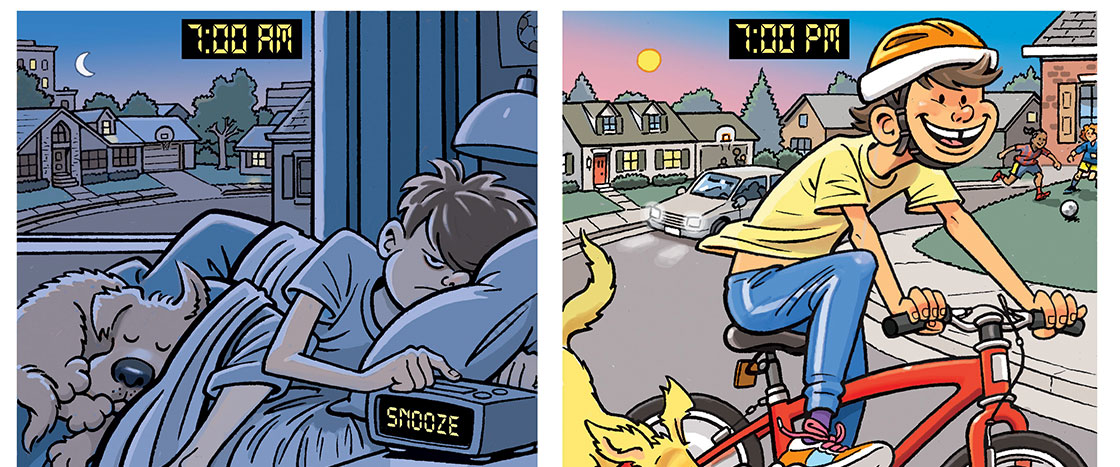You can barely lift your head off the pillow. Your body feels weak. All you want to do is crawl under the covers and sleep for 50 years.
Do you have a cold? The flu?
Nope. It’s just the first day of daylight saving time (DST), and you’ve lost an hour of sleep.
DST is observed in 70 countries, including most of the U.S. It begins on the second Sunday in March, when we move our clocks forward one hour. It ends on the first Sunday of November, when we change our clocks back.
Moving the clocks ahead gives us less sunlight in the morning and more in the evening. In other words, it stays light later.
That might sound like a bright idea. But many people aren’t so sure. A recent poll found that 40 percent of Americans would rather not set their clocks ahead each spring.
So should we get rid of daylight saving time?
You can barely lift your head off the pillow. Your body feels weak. You want to crawl under the covers and sleep for 50 years.
Do you have a cold? The flu?
Nope. It’s the first day of daylight saving time (DST). You’ve lost an hour of sleep.
Seventy countries use DST, including most of the U.S. It begins in March, when we move our clocks forward one hour. It ends in November, when we change our clocks back.
Moving the clocks ahead gives us less sunlight in the morning and more in the evening. In other words, it stays light later.
But a recent poll found that 40 percent of Americans would rather not set their clocks ahead each spring.
So should we get rid of daylight saving time?


